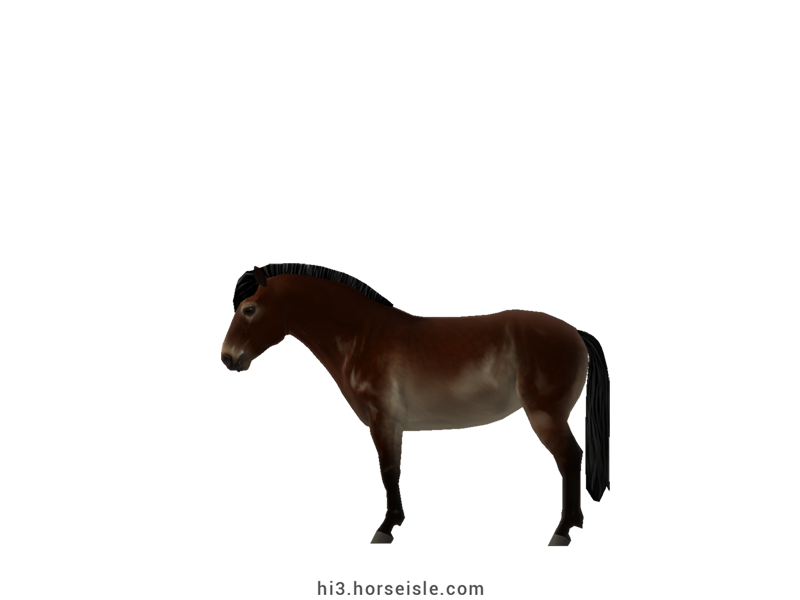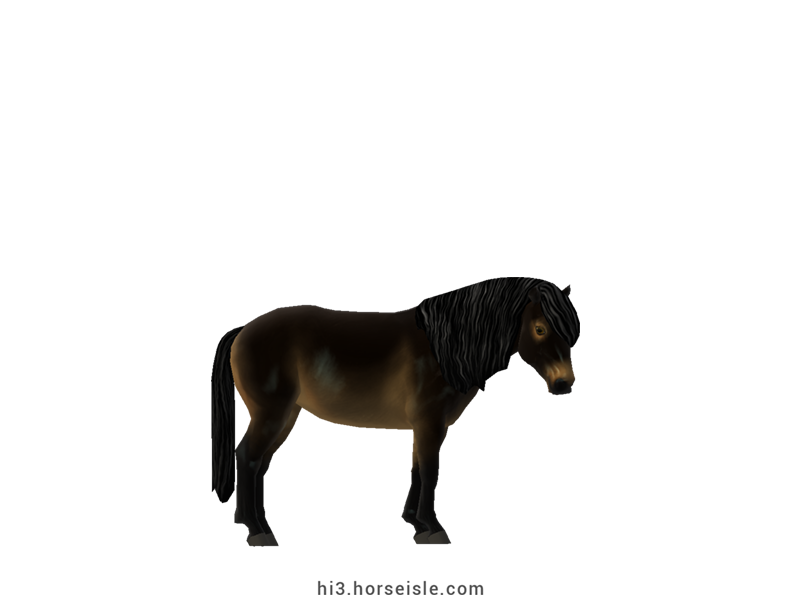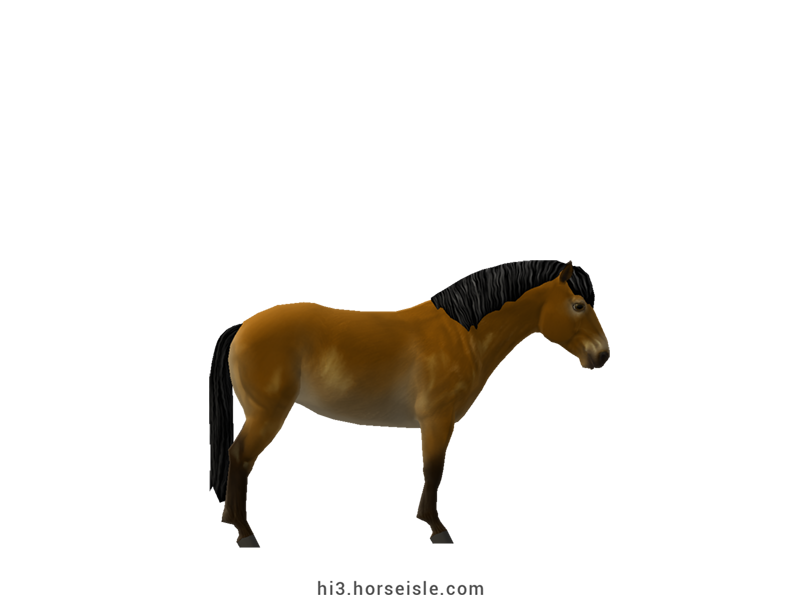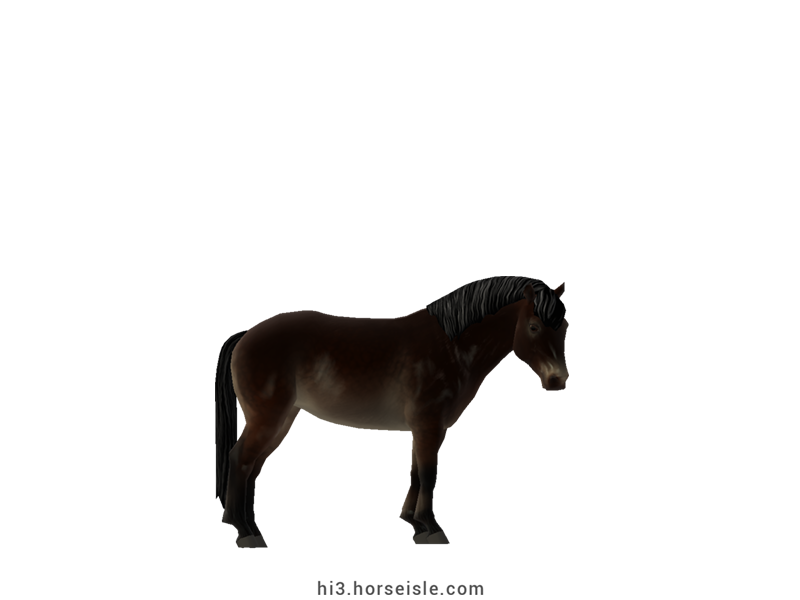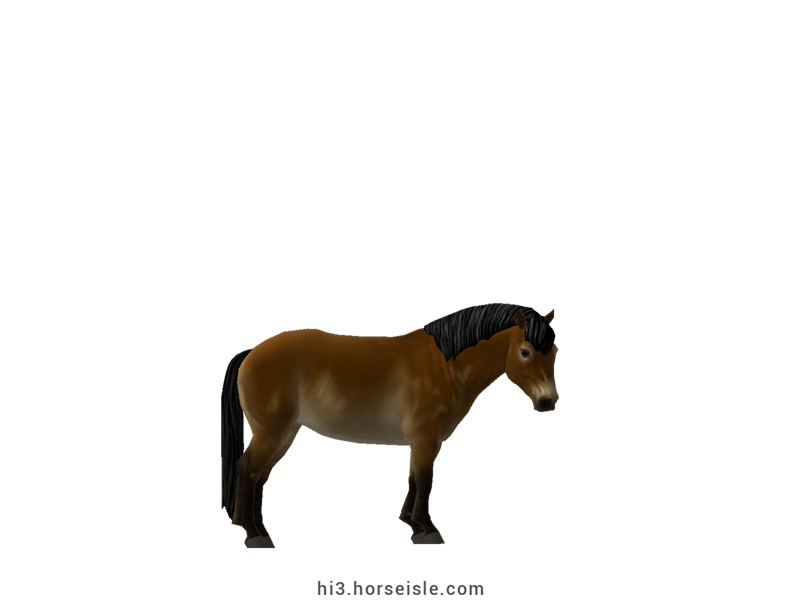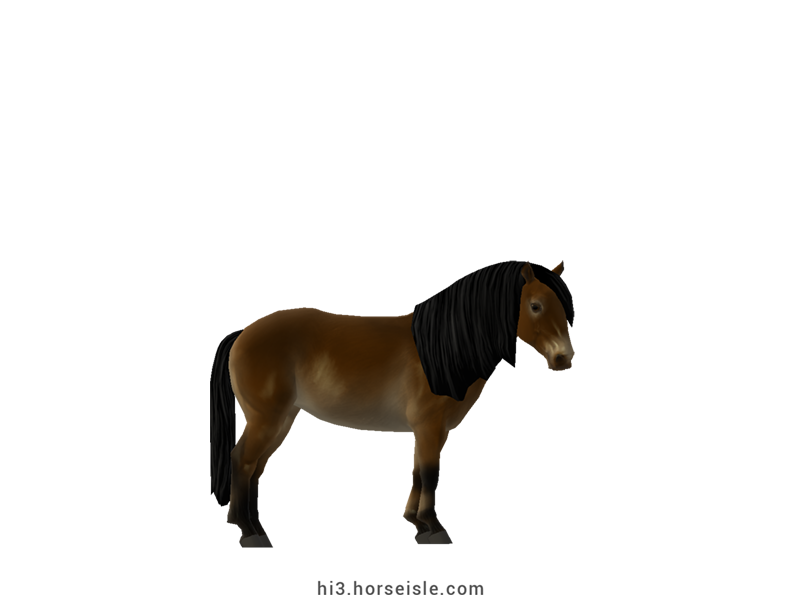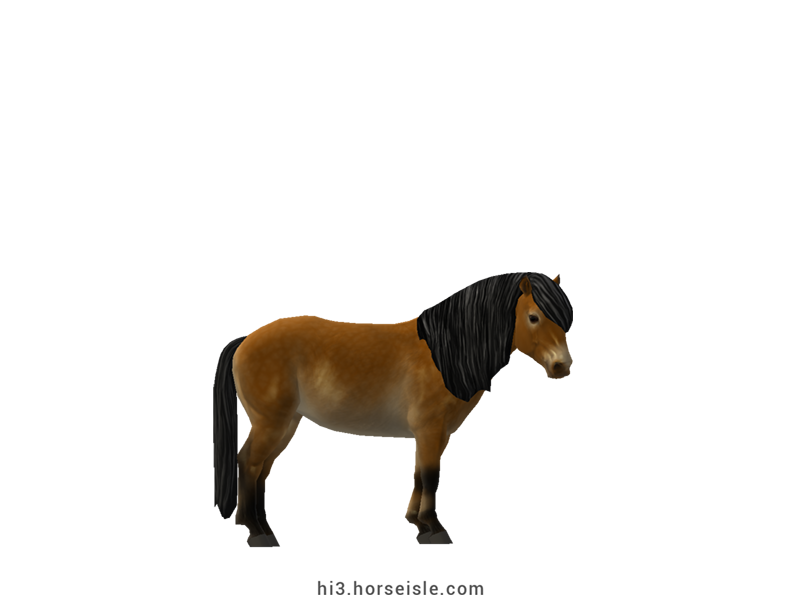Our Massive Real World Equine Reference!
[ INDEX ] Equine Type: Horse Breed: Exmoor [ PREV ] [ NEXT ]
Britain's most ancient breed:
The ancestors of the Exmoor arrived from Alaska to Britain during the last Ice Age. Originally, they lived all across Britain, but when the weather changed they were forced to migrate to the British moors where pastureland was still available.
Some of these ponies found their way to Exmoor moors, southwest England, where the moors shaped them into the Exmoor pony.
Perfectly adapted to the cold:
Living in a cold climate for thousands of years, Exmoor ponies became well adapted for survival in the harsh Exmoor weather.
Their eyelids are thick and fleshy, a phenomenon called 'toad eye' which provides additional protection and insulation for the eye. Their nasal passages are extra long, and this gives the cold air additional time to heat before it reaches the lungs.
Their digestive system is capable of digesting rough winter forage that other horses can't digest. The ability to eat plenty during the winter means that the bacteria that live in their gut have a constant supply of food to break, an activity that produces sufficient heat to keep the ponies warm.
Keeping warm with the perfect hair:
The hairs of the Exmoor play a key role in keeping all of the heat from escaping.
Exmoors have a double-layered winter coat: the inner layer is soft and provides isolation against the cold, while the outer layer is greasy and provides isolation against wetness. These two layers are so effective in isolating the body heat of the ponies, that snow that fell over the ponies' backs can stay there for several days before it melts away because so little body heat escapes their coats.
The mane, forelock, and tail also play a big role, as they are designed to allow water to drip only from the sides of the neck (over the mane), the forehead (over the forelock), and the back legs (over the tail), thus keeping the areas underneath them relatively dry and warm.
Last, there are the hair whorls that are found in very specific locations on the Exmoor's body. These whorls direct the flowing of the water away from sensitive areas, thus keeping these areas dry and warm.
Best pure:
Exmoor ponies roamed wild in the moors until they were domesticated by the Celts who used them for pulling chariots. They remained pure all the way into the 19th century, by which time they were used as mounts for riding and herding livestock in the moors.
When the British Crown sold the Exmoor ponies in the moorlands to private farmers during the 19th century, there were attempts to improve the ponies by crossbreeding. However, these were abandoned when the crossbreds couldn't survive the winters, and the Exmoor remained a pure breed.
Post World War II:
The numbers of Exmoors were stable until World War II, during which they faced extinction due to several reasons, mostly theft, which left only 50 ponies in the moors.
When the war ended, a group of breeders under the leadership of Mary Etherington gathered the remaining ponies and rebuilt the herds. Since then, the population of the Exmoor grew, but its overall numbers remained low, and today it is a rare breed.
The Exmoor today:
Today, Exmoors are found all across the UK, and make good mounts for children and light adults. These versatile ponies have good stamina and are used for a variety of activities, such as show-jumping, trekking, pony games, and even endurance riding.
In addition, Exmoor ponies still roam the Exmoor moors where they can live all year long without assistance. Their adaptations, surefootedness, and cleverness, allow them to know where the best feeding grounds are and to walk there safely through the deep snow while keeping happy and warm.
Conformation:
Exmoors have an iconic, uniform appearance that makes them stand out from other pony breeds. The head is short but is deep and broad, the profile is straight, the muzzle is squarish, the toad eyes are large, and the ears are small but wide apart. The neck is thick and has a smooth, straight underline that joins a slightly flat chest.
Overall, the body is muscular but compact, with the barrel deep and the ribs well sprung. The croup is slightly sloping, but the hindquarters are still rounded. The legs are short, and although they are slender than usually seen in ponies they still have sturdy joints and bones. The hooves are small but hard.
The mane is medium or long in length. It usually grows coarse and bulky, but can also be finer and lie flat on the neck. The tail always grows long but its thickness varies. The legs often have light feathering.
Performance metrics:
The following are the: range, average, (SD), and MOE of performance metrics of ordered Exmoors in Horse Isle (not bred ones). In rare cases, horses might have metrics outside of the range. Breeders can produce horses that are beyond this range.
Speed: 12.9-14.3, 13.6 (0.3), 0.05.
Sprint: 30-43, 36 (3), 0.53.
Accel: 0.74-0.96, 0.86 (0.05), 0.01.
Decel: 0.80-0.95, 0.87 (0.03), 0.01.
Jump: 4.79-5.07, 4.93 (0.05), 0.01.
Pull: 1.38-1.91 1.64 (0.12), 0.02.
Turning: 39.40-53.36, 45.58 (3.21), 0.63.
Reverse: 2.1-2.7, 2.4 (0.1), 0.03.
Stamina: 44.59-51.17, 47.71 (1.18), 0.23.
Reaction: 0.58-0.73, 0.66 (0.04), 0.01.
Coats & Height:
Coat: dark-bay, seal brown, and brown-dun**. The coat is always solid, heavily mealy, and lacks white markings. Sooty is common.
* no brindle.
** dun doesn't exist in Exmoors in Horse Isle as it doesn't match the type of muted dilution seen in real Exmoors. Instead, Exmoors in Horse Isle come in linebacked.
Height: 11hh to 13hh.
* ponies under 12hh are non-rideable.
[ INDEX ] [ PREV ] [ NEXT ]

